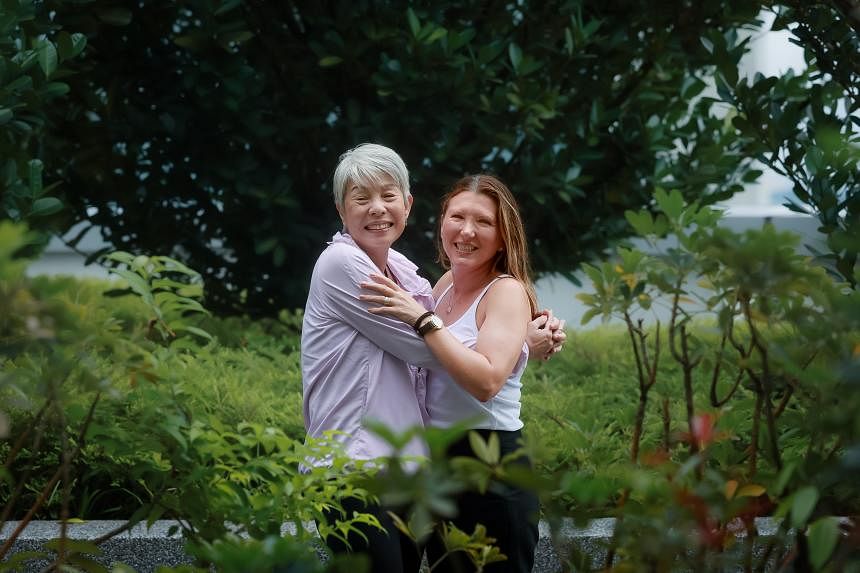SINGAPORE – Hot flushes, once thought to be the most common symptom among midlife women, have been knocked off their top spot.
Researchers here found that aches and pain in the muscles and joints are the top menopausal complaint among women in Singapore, affecting between 30 per cent and 40 per cent of them.
Yet, most doctors in Singapore and overseas do not recognise menopausal joint pain, often diagnosing the problem as the wear and tear of overuse or ageing.
Called arthralgia, it had moderate or severe impact on a third of the midlife women who participated in two studies conducted by the Integrated Women’s Health Programme (IWHP) at the National University Hospital (NUH) and the National University of Singapore Yong Loo Lin School of Medicine (NUS Medicine) in 2023.
Both studies, focused on Chinese, Malay and Indian women – the three main races in Singapore – were funded by the Singapore National Medical Research Council under its Senior Clinician Scientist Award given to Professor Yong Eu Leong. The amount was about $3.5 million for 2021 to 2025.
The first study, a ranking of menopausal symptoms published in October 2023 in Maturitas, an international journal that focuses on midlife and post-productive health, discovered that joint and muscular discomfort was the most reported symptom among women here.
More than three in five, or 62.5 per cent, of 1,054 Singaporean women reported symptoms of arthralgia during their menopause, compared with 27.5 per cent for sleep problems, 20.3 per cent for vaginal dryness, and 19.6 per cent for mental and physical exhaustion. Hot flushes were the fifth most reported symptom, at 18.6 per cent.
“About 30 to 40 per cent of them complained of very severe joint or muscular discomfort,” said Prof Yong, emeritus consultant in the Department of Obstetrics and Gynaecology at NUH.
Two participants, Madam Regina Lim, 58, and Ms Nicole Doyle, 52, were among those who reported muscle and joint pain.
Madam Lim used to run twice a week, but she began to suffer stiffness of her knees after reaching menopause about five years ago. This had not occurred before menopause.
“I thought my regular running affected my knees. I could not squat and my GP told me it was wear and tear,” said Madam Lim, who works in the travel industry. She also suffered from poor sleep and would cry for no reason. “I also had brain fog, and it was not helpful because I needed my memory to help book clients on flights,” she added.
It was only after being in the study that she realised her pain and other symptoms were related to her menopause.
Ms Doyle, an expatriate housewife, went into menopause after a hysterectomy at age 44. For her, the hot flushes were the worst symptom.
“My family has a history of breast and ovarian cancer. When I had a growth in my fallopian tube, I went for a hysterectomy and had one ovary removed. Two years on, I developed hot flushes. It is overwhelming. I was in Europe one winter and while everyone had their coats on, I was in my singlet,” she said.
Ms Doyle also has joint pain in her fingers, which she discovered when she went to draw the curtains one morning.
Prof Yong explained that arthralgia affects multiple joints – shoulders, fingers, knees, foot – “sending pain and stiffness, and it is debilitating”. “Unfortunately, the world does not recognise menopausal joint pain,” he added. “When it comes to menopausal symptoms of women in the West, hot flushes are usually No. 1.”
The second study, published in December 2023 in Climacteric, the official journal of the International Menopause Society, confirmed the significance of arthralgia as a condition that affects midlife women.
It found that about 75 per cent of the study cohort of 1,120 midlife women suffered from some form of arthralgia, ranging from mild to very severe, and it was associated with other menopausal symptoms, such as vaginal dryness, physical and mental exhaustion, and poor muscle strength.
Prof Yong said one proof that menopausal joint pain exists is that breast cancer patients who take an oestrogen inhibitor also suffer the same symptoms. The oestrogen inhibitor prevents the cancer from recurring, but mimics what happens in menopause, when the body stops producing oestrogen.
“Oestrogen levels in these women plummet because of this inhibitor, so half of these women suffer from the same type of pain like our menopausal women. These are young healthy women with breast cancer. So when they take the inhibitors, they suffer severe arthralgia. This is why I am convinced menopausal pain is real,” he said.
Prof Yong pointed out that a study from the United States 20 years ago also found that women receiving hormone therapy had a lower incidence of neuromuscular pain than those who were not.
“And if they chose to discontinue the hormone therapy, the pain and stiffness returned. To me, this is another independent pointer indicating that menopausal pain is real, but it was ignored because it was not a big problem in the West,” he said.
In response to these findings, Prof Yong said the IWHP will be working with physiotherapists at NUH to develop targeted interventions, such as exercise regimens to enhance muscle strength, and exploring menopausal hormone therapy to alleviate joint pain and improve overall well-being for midlife women.
This will also fill crucial gaps in the management of menopausal symptoms for women in Singapore.
Here are some tips on how to relieve menopausal pain from Professor Yong Eu Leong and Ms Cammy Tsai, the principal physiotherapist at NUH’s Department of Rehabilitation:
- Hormone replacement therapy (HRT) can alleviate joint pains associated with menopause. It works by replacing estrogen, the main hormone that the body is no longer naturally producing. While it is beneficial, women receiving HRT would need to be monitored by their obstetricians as HRT may have side effects such as breast tenderness, unexpected vaginal bleeding and headaches, and more serious ones that include blood clots and breast cancer.
- Exercise: Walking can reduce arthralgia-induced pain. Walking increases blood flow, and the movement helps with strengthening muscles.
- Repetitive strength and balance exercises can build muscles and retain flexibility.
- Weight management: Being overweight can exacerbate menopausal muscle and joint pain. Excess weight puts additional stress on weight-bearing joints, like the knee and the ankle. There are also inflammatory factors associated with weight gain that might contribute to pain in other joints, such as the fingers and shoulders.


